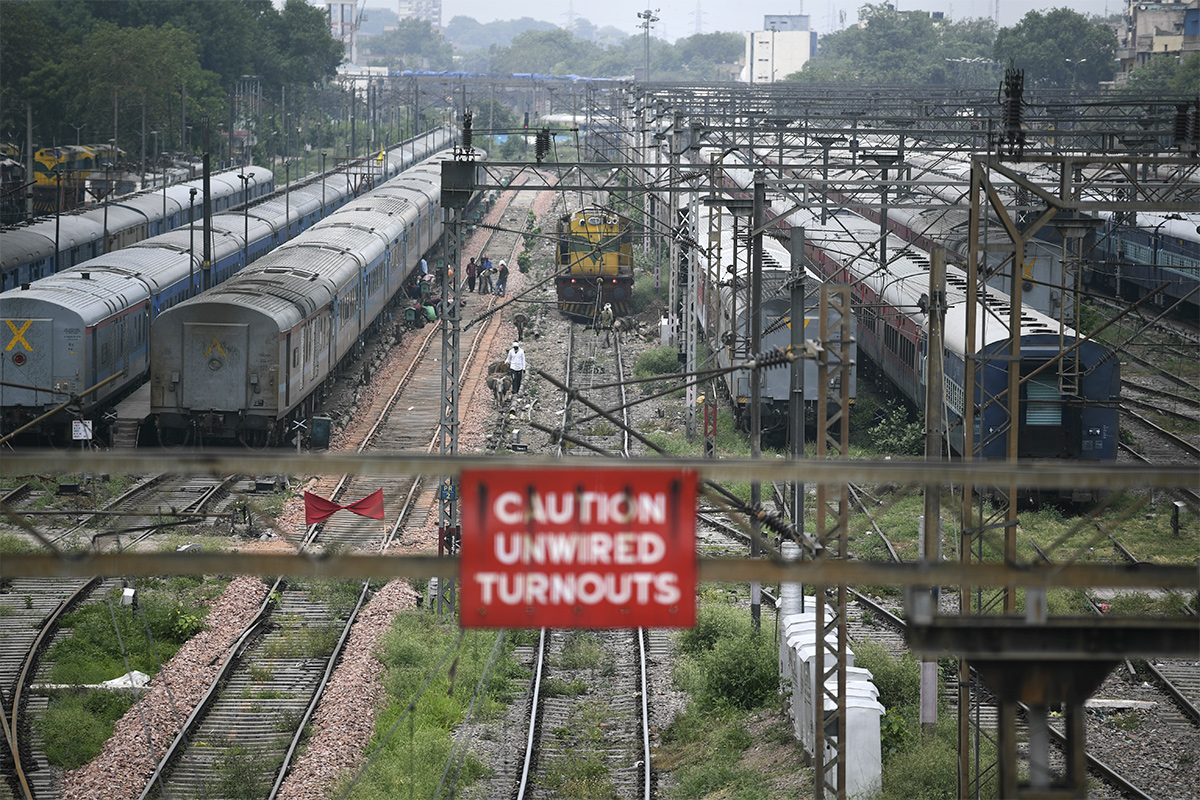Preparing for the demand in future as part of its National Rail Plan, the Indian railways is planning to increase its share in freight movement from 27 per cent now to 45 per cent by 2030, officials said on Friday.
The railways also plans to introduce demand based passenger trains and doing away with the wait list tickets by 2024.
Advertisement
Addressing a press conference here, Railway Board Chairman and CEO V. K. Yadav said, “We have been working to prepare the National Rail Plan for last two years and we are ready with our plan that will be shared with everyone. Based on the suggestions and comments we will finalise it within a month.”
He said that in 2019 Indian railways transported 1,210 million tonnes through freight which is 27 per cent.
“By 2026 we plan to carry 6,400 million tonnes. We are trying to work on the infrastructure so that we can reach 2,400 million tonnes by 2024. We have also prepared a document named Vision 2024,” the official said.
Yadav said that the railways plans to increase freight train share to 45 per cent by 2030.
According to Yadav, the national transporter has tied up funding for all important projects to be completed by 2024.
“The plan is to double the tracks whereas multi tracking of others will be done wherever required,” he said.
The Chairman added that railways have also focused on reducing the operational costs.
Sharing the plans of the national transporter, the CEO said, “We have planned to increase the speed of the freight trains from 22 kmph to 50 kmph.”
He said that during the nationwide lockdown in the wake of the Covid-19 pandemic, railways took up maintenance work of the tracks on a mass scale.
He said the national transporter has commissioned 600 km of the Dedicated Freight Corridor and the entire project will be completed by June 2022.
The Chairman said that a capital expenditure of Rs 2.9 lakh crore is required for the 2024 vision document.
He said that beyond 2024, we have planned three DFC corridors, we have started preparing for the DPR of these projects. We are working on the new high speed rail corridors besides the 508 km Mumbai-Ahmedabad High Speed Rail Corridor.
When asked about the loss due to the Covid pandemic in the passenger and freight train segments, Yadav said substantial revenue loss has been seen in passenger train revenue as operations were suspended for several months.
He said “The Indian railways estimates passenger earnings of Rs 15,000 crore in the current fiscal compared to Rs 53,000 crore in the last financial year.”
“So far, passenger train revenue in the current fiscal stands at Rs 4,600 crore.”
Giving details of the freight train earnings, Yadav said, “Freight revenue and loading is expected to go up by 10 per cent.”
According to Yadav, freight loading in December is expected to be higher at 120 million tonnes compared to 110 million tonnes in November with major growth in loading of food grains, fertilizers and other goods.
Yadav said, “We will be able to meet operating expenses with our revenue in the current fiscal. We will be self reliant despite Covid pandemic on the back of an estimated increase in freight earnings and substantial cut in expenditure cost.”
When asked when normal train services are going to start and from when the zero time table will commence, the Chairman said that slowly we are moving towards normalcy.
“Already 1,089 trains running, suburban trains operating and passenger trains running and we have asked the GMs to speak to state governments to chalk out the requirements of the short route passenger trains.
“In a phased manner and after talks with state governments we are going forward towards normalcy,” he said.
He said it is tough to predict when train services will be normalised.
“Wherever the state governments are finding that the pandemic is under control there the services are resuming slowly. In 30-40 per cent trains occupancy is not good. So we are taking everything into account, but it is quite tough to predict the same,” he added.
The zero based time table will be launched only when normal train services start, he added.











